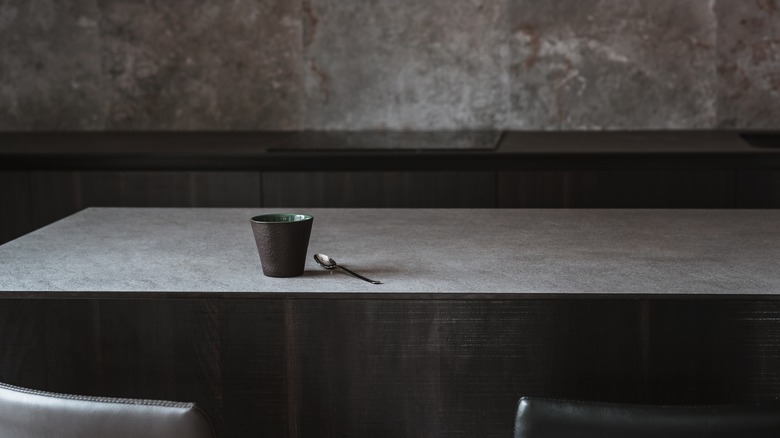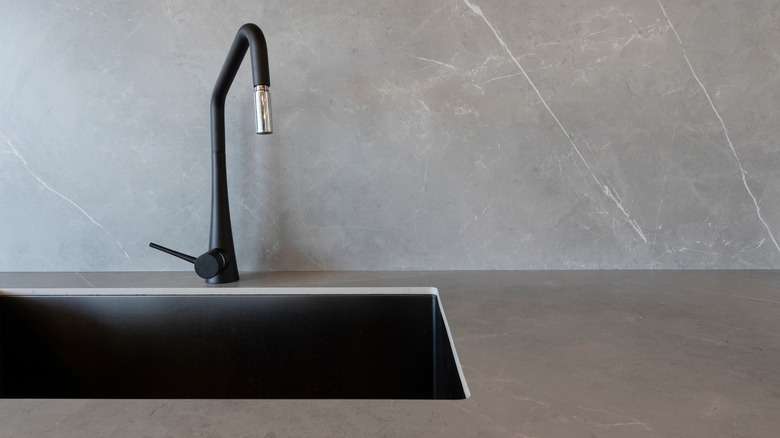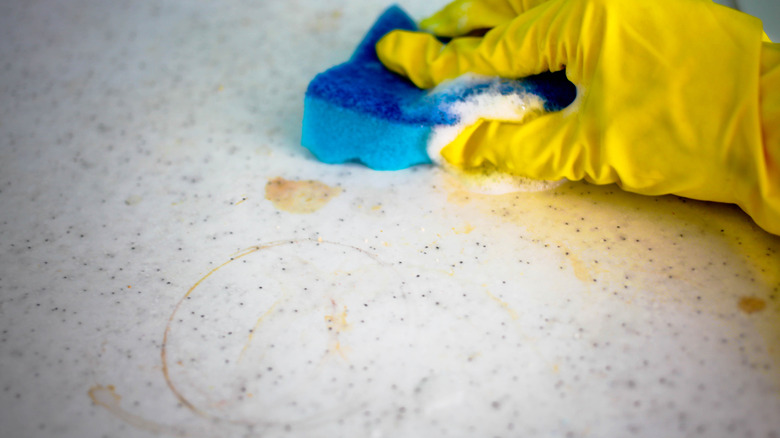The Best Way To Clean Concrete Countertops
When it comes to countertop materials, there are a plethora of choices with various benefits and drawbacks. One of the more durable and easy-to-maintain materials is concrete. According to Concrete Network, there are plenty of pros to the material, including the previously mentioned durability, as well as being very visually customizable. While plain concrete lends itself to an industrial aesthetic, it can also be dyed to look like natural stone, such as granite or marble, and it can also be textured to your liking.
That being said, concrete is not a flawless material. One of the challenges with concrete countertops in particular is how quickly stains can set in if they're not correctly sealed. As such, before diving headfirst into installing concrete countertops, you should know how to both clean them and seal them, as well as maintain the integrity of the sealant and know how to treat stains. Luckily, it's not a difficult process if done routinely.
Cleaning concrete
The first thing to know before cleaning concrete countertops is that you will be cleaning the laminate seal, as opposed to the material underneath. Countertop Speciality advises sticking with cleaning products that are pH neutral, as alkaline products like bleach or acidic products like lemon can damage and dull the appearance, or in some cases remove the sealant altogether.
Mild dish soap and water will work just fine to clean the counter, but the soap may leave a film behind on the sealant. For optimal appearances, use a countertop cleaner explicitly made for quartz, granite, or other stone materials. In addition, a soft cloth, like flannel or microfiber, will help prevent scratching the sealant. As for disinfecting the surface, isopropyl alcohol will work without damaging the laminate coating. However, since it is acidic, make sure to dilute it — 2 cups of distilled water to 1/4 cup of isopropyl alcohol is a safe ratio. Moreover, try to avoid store-ready disinfectants, as they tend to be bleach-based.
Treating stains
While regularly cleaning and disinfecting your concrete countertops will help maintain the integrity of the surface sealant, spills are inevitable in a kitchen environment. As such, you should not only know how to clean the counters, but how to address stains. With that being said, each stain should be approached differently.
According to Countertop Speciality, different stain appearances affect how you should treat them. For example, if you see white, chalk-like stains or rough spots, they're etched marks that have likely been caused by contact with something acidic, whether food or a cleaner. For those stains, you'll need to lightly sand the surface to remove the damage. Other stains, like grease or oil, won't just rest on the surface, rather, they will absorb into the porous surface of the concrete. For these, you'll need to combine flour and acetone or use a professional pre-mixed poultice. Spread it about 1/4 inch thick on the stain, and cover it with plastic wrap for 24 hours. Remove the plastic and let it dry out for another 24 hours. Clean it off with water and repeat as needed.


